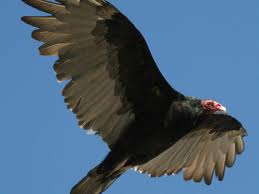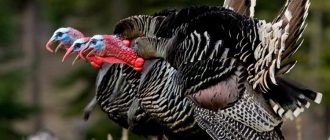Want to know more about the Turkey buzzard? Read on to discover more about this Native American bird known as the Turkey buzzard or Turkey Vulture…
The Turkey buzzard is found throughout North and South America and is commonly known as the Turkey vulture also. The biological name for the Turkey buzzard is Cathartes aura and it is known as the John Crow or Carrion Crow in the Caribbean region.
It is one of the three species from the genus Cathartes which falls in the Cathartidae family. In the New World, the Turkey buzzard is the most widely prevalent vultures. Starting from the South of Canada and going all the way through to the southern most end of South America, you will be able to spot the Turkey buzzard across the terrain. They inhabit open and semi open areas like shrub lands, deserts, pastures and even forests which have subtropical ecosystems.
Description of the Turkey Buzzard
This large bird has a huge wingspan which ranges from 67 to 72 inches in width and a total length of approximately 25 to 32 inches. This heavy bird weighs anywhere between 0.85 to 2.26 kilograms. The plumage of the turkey buzzard ranges from black to dark brown. However, it has a purplish red neck and head without any feathers on it.
The beak is short and ivory colored with a sharp hook to it. The turkey buzzard can live in the wild for 16 or more years and is known to survive in captivity for over 20 years.
The turkey buzzard feeds on carrion because it is a scavenger. It has a very sharp sense of smell and vision which allows it to fly low and search for carrion in the grass. The sense of smell helps it to detect the decaying bodies of dead animals, because a lot of gasses are given off in the process of decay. This bird flaps its wings very infrequently during flight and uses thermals to manage a straight and steady flight. Turkey buzzards are found in large groups and are community-oriented. Since it does not have the regular vocal organ found in birds, called the syrinx, it makes low hissing and grunting sounds only.
The turkey buzzard roosts in the groups and their nests are normally found in hollow trees, a cave or perhaps thickets on the plains. Generally each pair ends up raising two chicks annually and these are fed through regurgitation. Since it feeds on carrion, it hardly has any natural predators to contend with. This means that the population of the turkey buzzard has not only remained constant over the centuries but has steadily grown and spread across the Americas.
It is interesting to note that since 1918, this bird is protected legally under an agreement called the Migratory Bird Treaty. The turkey buzzard has its common biological name thanks to its a similarity to the wild turkey, which has a bald and red head and dark plumage.
The reason why it is sometimes called a vulture is because the term vulture is derived from Latin and means ‘to tear apart’, which is what the Turkey buzzard does to the carrion it feeds on. This bird is part of the Cathartidae family in which six other species of New World vultures have been added, including the genus Cathartes. This category also includes the Lesser Yellow Headed Vulture and the Greater Yellow Headed vulture.





